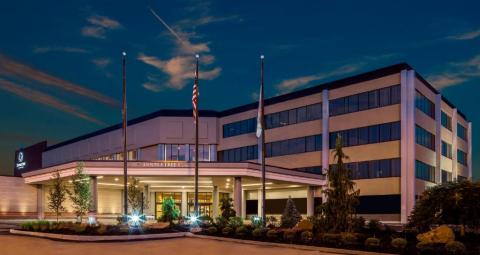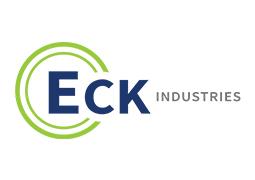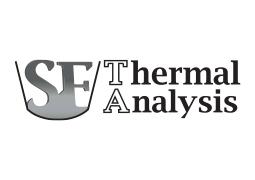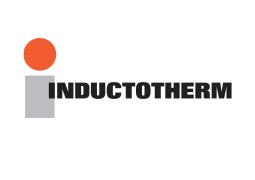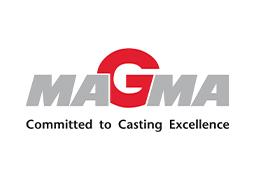2024 Aluminum Specialty Conference
DoubleTree By Hilton Hotel Pittsburgh - CranberryOctober 15 – 16, 2024
Overview
Expand your knowledge of the aluminum metalcasting industry at the 2024 AFS Aluminum Specialty Conference. This conference will feature experts in molding, melt prep, casting process controls, and post-casting processes with the newest knowledge broken down to target engineering, operators, and plant managers making this a must-attend for all foundry personnel and casting users.
Specific industries include sand casting, permeant mold, investment, lost foam, and die casting. Special features include the advancement of legacy topics and the unveiling of groundbreaking discoveries in the greater cast aluminum ecosystem.
For information about sponsorship opportunities at the event, please contact Kim Farrugia at kfarrugia@afsinc.org or click here.
Location
Hotel Information
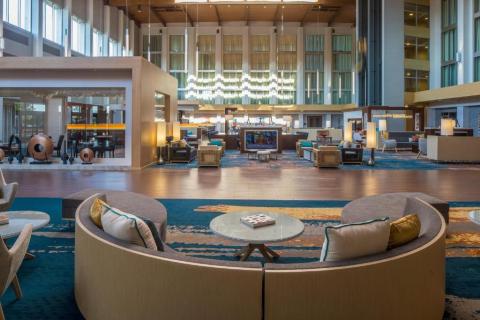
- DoubleTree By Hilton Hotel Pittsburgh - Cranberry
-
Mars, PA
Make a reservation by calling (724) 778-4174 and asking for the AFS room block.
Conference Agenda
Session Chair:
Luke Schimmel
Aluminum Division Chair; Production Engineering Manager, Fairbanks Morse Engine, Brodhead, WI
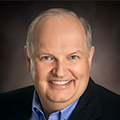
Kevin Anderson
Fellow, Mercury Marine, Fond Du Lac, WI
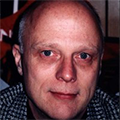
Geoffrey Sigworth
Harrisonburg, VA
The quality index (Q) was first proposed by French foundrymen to explain the changes in strength and elongation of tensile bars during an aging heat treatment. This index was later given a theoretical basis by Caceres and co-workers, making it possible to answer the question: “Does this casting have the highest quality possible; or can further improvements be made?” The quality of A356-T6 castings made in an AA test mold are then considered. A considerable improvement in quality has occurred during the last 50 years. Improved degassing is the primary reason. The effect of Fe in A356-T6 B108 test bars is also presented. These results show that in rapidly cooled sections, a well degassed and low iron metal produces a quality close to the maximum theoretically possible. Recent tests of low-pressure suspension components show current best practices produce the same highest quality in commercial castings. Contrary to the claims of Campbell and co-workers, when only considering tensile properties, the presence of oxide films is of lessor importance compared to good degassing and rapid freezing rates. Examples are presented. When fatigue strength is important, however, the situation is more complicated. Factors controlling fatigue life are discussed in some detail.

Ronny Simon
Technical Manager Non-ferrous foundry NAFTA , Foseco, Cleveland, OH
The production of Aluminum castings globally is dominated by the automotive industry and the growing importance of emissions and fuel economy has resulted in a rapid increase in the use of Aluminum castings. Melt treatment by rotary degassing must be capable of achieving consistent levels of cleanliness and hydrogen control. Many quality management systems also require a 100 % record of production data and a sophisticated melt treatment system with data storage becomes even more attractive to the automotive industry.
Depending on the foundry layout, the melt is treated not only batchwise but also in well (semi-continuous) or continuous applications.
This paper summarizes various studies on the influence of ambient conditions, alloy composition, and melt temperature on hydrogen solubility in aluminum melts. Findings from extensive lab and field trials have led to a SMARTT batch degasser software which analyses all starting parameters and calculates the treatment parameters for the rotary degassing process just before each treatment. It ensures consistent melt quality after each treatment and can be used in hydrogen removal and controlled hydrogen addition. It became state-of technology for many foundries.
In a next step the SMARTT software was adapted to a well degassing application. The paper shows the main difference to batch treatments in terms of simulation and results. It discusses the impact of different casting weight and pouring rate on the degassing parameters for both degassing and upgassing. In a case study, results of degassing treatments under different casting conditions are discussed.
Overall, SMARTT software with all possible features can become an integrated part of process control in foundries and is a major step on the way to “Foundry 4.0”.

Hideki Gebken
Engineering Manager, Standard Manufacturers Services, Winnipeg, Canada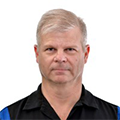
Gordon Peters
Operations Manager, Linamar Fruitport Operation, Reed City, MI
Due to the high start up costs for adding HPDC capacity many Low Pressure and permanent mold casting suppliers are seeing request for converting HPTC parts to PM/LPPM processes.
While there is definite savings in capital equipment costs, tooling costs the challenge is duplicating the HPDC casting design. Compromises need to be made in minimum wall thicknesses and in minimum draft angles in order for HPDC designed parts to ne adapted to PM/LPPM processes.
Parts can additionally be redesigned utilizing the higher strength that Heat treatable alloys can provide in PM/LPPM processes and provide design alternatives to the casting designers when considering converting HPDC parts to PM/LPPM.
(Drinks & Appetizers)
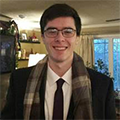
Nathaniel Bryant
Assistant Project Manager, University of Northern Iowa, Cedar Falls, IA
Internet of Things devices such as sensors transmit data to a central database where it can be stored and displayed in real time. This presentation covers data communication protocols and its applications for dashboarding foundry process data in this manner. Specifically, some standard architectures will be discussed and how they can be integrated with both legacy equipment and modern control systems. Open source software platforms exist and enable low cost IoT implementation for the foundries with minimal IT resources. A few examples of which will be described in the presentation.
Session 1 Chair:
Brian Began
Vice President of Metalcasting Technical Services, American Foundry Society, Schaumburg, IL
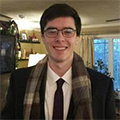
Nathaniel Bryant
Assistant Project Manager, University of Northern Iowa, Cedar Falls, IA
Are you curious about the Internet of Things (IoT) and want to explore its possibilities? Join our workshop where you'll dive into the world of IoT and build your own small-scale system!
- What to Expect:
- Hands-On Experience: Learn by doing! Build a mini IoT system that mirrors industrial-scale applications with low cost hardware and open source software.
- Guidance Along the Way: Our instructors will guide you through the process, answering any questions that arise and troubleshooting potential problems.
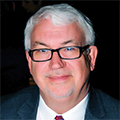
Session 2 Chair:
David Weiss
President, Vision Materials, Manitowac, WI
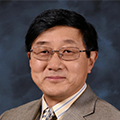
Alan Luo
Professor Material Science Engineering, The Ohio State University, Columbus, OH
Aluminum is increasingly used for lightweighting applications in the transportation industries to reduce energy consumption and carbon footprint. However, primary production of aluminum is energy-intensive with extensive CO2 emission. Re-melting aluminum scrap only uses ~5% of the energy (and significantly reduced emission) required to produce primary aluminum from ores. The amount of aluminum available for recycling is estimated to double by 2050, providing a huge opportunity to achieve a near closed loop cycle (material circularity) for aluminum. The use of recycled aluminum in structural casting applications will improve the sustainability of the aluminum and manufacturing industries. The mechanical properties of secondary (recycled) aluminum alloys are often limited by their high “impurities” which can be refined during recycling or mitigated via microalloying in alloy design. Examples are given on designing secondary aluminum alloys for structural die casting applications using an integrated computational materials engineering (ICME) approach.
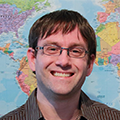
Yohan Tremblay
President, Foundry Solutions and Metal Services Inc., Magog, QC
Aluminum-copper (Al-Cu) alloys, such as 201, are characterized by the high mechanical properties but their low castability can hinder material performance and processing. Grain refinement has been identified as a critical method to counterbalance this limitation; however, accurate measurement and validation of grain refinement have been challenging with traditional thermal analysis systems.
This study introduces a next-generation thermal analysis system capable of providing sensitive and precise measurements of grain refinement, phase formation, and solid fractions. The study compare the grain refinement level in comparison with the grain size by microstructure. Also, there are potential for Heat treatment optimization using the late eutectic temperature.
Notably, the system generates accurate fraction solid curves that can be directly incorporated into simulation software, enabling more reliable process validation and optimization. Comparative evaluations between the grain sizes and the grain refinement level. By providing a robust method for assessing the solidification process and validating the grain refinement approach in Al-Cu 201 alloys, our system offers new avenues for enhancing both material properties and manufacturing efficiencies.

Andrew Halonen
President, Mayflower Consulting, LLC, Calumet, MI
The automotive business is a dynamic marketplace as new manufacturers are working to make an entrance and capture market share. New powertrains bring more selection to consumers, yet often at the expense of weight, cost and reliability. Electrification affects material selection in the chassis, suspension and brakes, and the value proposition for lightweighting. This presentation will explore innovations in materials, processes and applications, yet will be grounded with benchmark data on material selection across many OEMs and vehicle models.
Session Chair:
Hideki Gebken
Engineering Manager, Standard Manufacturers Services, Winnipeg, Canada

Roy Stevenson
Regional Application Manager - East/Southeast Region, MAGMA Foundry Technologies, Schaumburg, IL 
Dan Hoefert
Eck Industries, Inc., Manitowoc, WI
Transferring molten aluminum into molds comes with the familiar challenge/goal to minimize splashing (a safety concern) and minimize turbulence (a casting-quality concern). A properly designed pour basin should prime (completely fill) the sprue quickly and allow the pourer to keep the pour basin full (without undo splashing) throughout the filling process. In addition to the safety concerns, splashing and turbulence create bubbles (wrapped in oxide film) that can enter the sprue and gating system. These can clog filters (if used), which can create variations in slower fill times. Films generated can also enter the casting to cause void and inclusion related defects. Typical pouring basins come in a wide range of shapes and sizes. This presentation will review several pour basin designs and sizes through simulation, to see how they perform in several common conditions: tall gating systems vs. short sprue systems and quicker fill times vs. slower fill times and smaller (hand-ladle) volume pours vs. higher volume (transfer-ladle) pours.
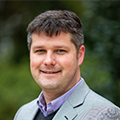
Charlie Monroe
Associate Professor, University of Alabama, Tuscaloosa, AL
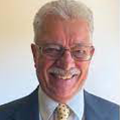
Tom Prucha
Editor-in-Chief, International Journal of Metalcasting; President, Metamorphosis, Rochester, MI
Aluminum alloys continue to be an important cast material because they provide good mechanical properties at a relatively low density. Accordingly, aluminum alloys are an often-researched alloy system. This presentation will review some key findings from a compilation of the most relevant recent papers published on aluminum metalcasting in the International Journal of Metalcasting (IJMC). Among the likely topics are better treatments, alloy developments, new applications, and improved manufacturability.

Adam Kopper
Technical Advisor, Mercury Marine, Fond du Lac, WI
The subject of Industry 4.0 has generated much attention in discussion of possibilities, research, and implementation in manufacturing operations. The foundry industry is no exception. The American Foundry Society membership is comprised of varied businesses across North America of differing numbers of employees, annual revenues, markets served, materials poured, and processes utilized. Such diversity can make it difficult for companies to engage in discussion on the topic of Industry 4.0. For the same reason, it is very challenging for a Professional Society like AFS to develop a one size fits all approach to foundry implementation of Industry 4.0. Nevertheless, it is critical that AFS understand where the foundry industry currently stands and what the needs are to help drive our industry forward on the path of Industry 4.0. This presentation delves into the findings of a comprehensive survey conducted by the AFS Industry 4.0 Committee on the state of readiness and adoption of Industry 4.0 across the foundry industry.
Session Chair:
Hideki Gebken
Engineering Manager, Standard Manufacturers Services, Winnipeg, Canada
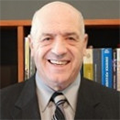
Mike Gwyn
Operations Manager, Metalcasting Design LLC, Mt. Pleasant, SC
Metalcasting alloys differ in their “likes” and “dislikes” for the design geometry that they flow into. Cast aluminum alloys have their own “likes” and “dislikes” for the design geometry they find in the mold cavity. Metal molds, with their rapid heat transfer rates, and ceramic shell investment molds, with their low heat transfer rates, can affect cast aluminum alloy attitudes about design geometry. However, across the whole process spectrum, the consequence of those “attitudes” is casting quality variability. Not realizing the cast aluminum alloy “likes” or “dislikes” about their design geometry, OEM design and QA teams often tighten their specifications, hoping to resolve variability that actually has a different cause. This panel will discuss diagnosis and solutions for this design geometry root cause for casting quality variability as well as other quality variables that have their root in production processes.
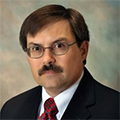
Ted Schorn
Vice President, Enkei, Columbus, IN (production variability)
While many castings have modest cosmetic requirements, some are used in such a way that they must meet stringent appearance standards. This presentation will discuss the various casting defects that create challenges to appearance quality and the many factors that need to be controlled to produce a uniform texture and cosmetic appearance suitable for painting. This material will be presented with a focus on permanent molding processes.
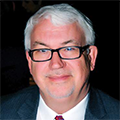
David Weiss
President, Vision Materials, Manitowac, WI
The aluminum casting industry has done a lot of work to improve the quality of molten metal alloys, such as proper de-gassing and cleaning, grain refinement and modification. The mechanical properties of properly prepared materials are expected to meet standards when cast within the allowable chemical compositions of the alloys. If the customer is asking for more, or if section size differences and other factors make it difficult to achieve those properties, the chemical composition range can be used to optimize properties. This presentation will discuss maximizing properties in three commonly used aluminum alloys, A356, E357 and A206 through heat treatment and adjustments to alloy chemistry within the allowable chemistry ranges of those alloys.
(Limited Capacity)
Registration
AFS member: $720 early | $905 standard
Non-member: $1,125 early | $1,350 standard
Early registration ends 9/1/2024
AFS presents a variety of technical and management conferences (in both in-person and virtual formats). The refund policy for AFS conferences is as follows: 1) Substitutions are accepted at no charge at any time up until the start of the conference; 2) Full refunds are offered if AFS is notified in writing of cancellation at least 30 days in advance of the conference. No refunds or credits are available for less than 30 days written notice.
